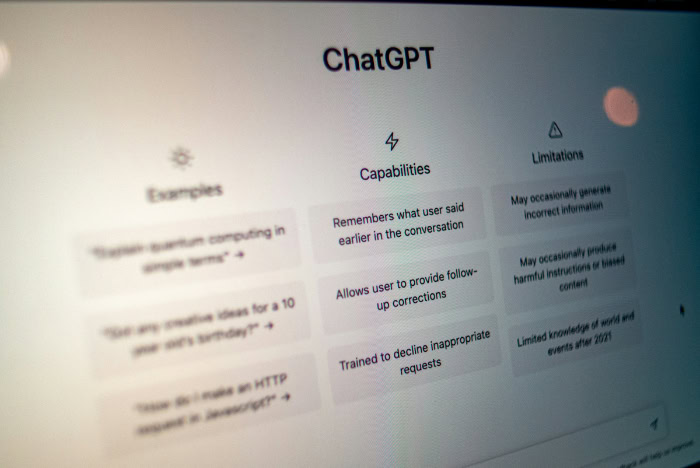How Does ChatGPT Work? Inside Its Training and Thinking

ChatGPT stands at the forefront of artificial intelligence, acting as a conversational partner, virtual assistant, and creative collaborator for millions worldwide. Its fluent dialogue and adaptability are making waves across education, business, entertainment, healthcare, and more.
Behind every lively chat lies a sophisticated engine capable of mimicking human conversation, solving problems, and generating content that feels authentic.
Core Architecture and Design
Modern AI chat tools like ChatGPT draw their remarkable abilities from a sophisticated structure that combines advanced mathematics, computer science, and linguistic theory. The design that powers ChatGPT is carefully engineered to understand context, recognize complex patterns in language, and generate human-like responses.
Each component within its architecture plays a vital role in shaping the natural conversations and creative outputs people experience daily.
Transformer Model Framework
At the core of ChatGPT lies the transformer model, which has become the gold standard for natural language processing. Transformers rely on self-attention mechanisms, a breakthrough that enables the model to evaluate every word in a sentence based on its relationship to every other word.
Rather than scanning text one piece at a time, transformers process entire sequences simultaneously. This parallel processing means the model captures subtle nuances, complex dependencies, and context far more effectively than previous sequential models.
Self-attention allows the model to weigh the importance of different words based on their relevance to each other within a single conversation. For instance, in the phrase “the dog chased its tail,” the model knows that “its” refers to the dog, not another object, due to these attention mechanisms.
This architectural innovation enables ChatGPT to interpret meaning, intent, and emotion with impressive accuracy.
Tokenization Process
Raw text cannot be processed directly by AI models. Before any language model can work with text, it first breaks words and sentences down into manageable pieces called tokens.
These tokens usually represent individual words, subwords, or even single characters, depending on the complexity of the language and the structure of the model.
Tokenization allows ChatGPT to recognize and learn patterns across massive datasets by treating varying inputs consistently. However, there are trade-offs involved.
Every prompt and response has to fit within a set token limit, constraining how much information can be processed at once. Longer, more detailed messages will consume more tokens, sometimes requiring the model to truncate or summarize content to stay within those limits.
The balance between token size and input complexity directly impacts the model’s flexibility and the length of its responses.
Generative Pre-Trained (GPT) Approach
The GPT methodology sets ChatGPT apart from traditional AI chatbots. Rather than being trained solely on hand-labeled data, GPT models start by absorbing knowledge from vast collections of text found in books, articles, websites, and more.
This pre-training phase relies on unsupervised learning, where the model predicts the next word in a sentence, gradually building a robust grasp of grammar, facts, reasoning, and style.
Over time, GPT models have evolved rapidly. GPT-3 made headlines with its ability to generate convincingly human dialogue and perform complex tasks.
GPT-4 and the efficient GPT-4o further improved on these capabilities, offering deeper reasoning, better contextual understanding, and more reliable answers. Pre-training enables the model to internalize a wide breadth of world knowledge, which is then refined during later stages.
The generative design means ChatGPT does not just regurgitate facts but crafts responses based on all it has learned, making each conversation unique.
Training Process and Data Utilization

Behind ChatGPT’s impressive performance lies a massive training process involving both raw computational power and thoughtful human guidance. The model gradually learns language, patterns, and reasoning by absorbing information from countless sources before refining its abilities with direct human intervention.
This approach ensures not only a breadth of knowledge but also a responsiveness to real human expectations.
Pre-Training on Large-Scale Datasets
Training begins with an immense collection of text data gathered from books, articles, open websites, code repositories, and public forums. Drawing from such diverse sources, the model encounters a rich variety of topics, writing styles, and linguistic quirks.
Each sample helps the AI build a more flexible and comprehensive grasp of language, expanding its vocabulary and deepening its contextual awareness.
Exposure to this ocean of data allows ChatGPT to detect patterns in how words, phrases, and ideas connect. Over countless iterations, the model internalizes rules of grammar, cultural references, and even nuances of humor or emotion.
The result is a system that can generate meaningful and relevant responses, echoing the diversity of human language and thought found across the internet and literature.
Fine-Tuning with Human Feedback
Once pre-training establishes a broad foundation, the model undergoes fine-tuning to better align with human expectations and ethical norms. Reinforcement Learning from Human Feedback (RLHF) plays a crucial role here.
Human evaluators interact with the model, rating sample responses and providing guidance on what feels helpful, accurate, or appropriate.
This process helps guide the AI away from unwanted behaviors and errors, encouraging clearer, more respectful, and more accurate answers. By iteratively adjusting based on what humans prefer, the model learns to offer responses that better match user intent and comply with ethical standards.
Ethical alignment is not only about avoiding harmful content but also about ensuring information is presented with clarity and sensitivity.
Scalability Challenges
Developing large-scale AI models demands significant computational resources. Training the ever-growing neural networks behind each new generation of ChatGPT requires supercomputers running for weeks or even months.
Each step up in model size increases memory usage, storage needs, and energy consumption, making such advancements both costly and resource-intensive.
Despite bigger models bringing more sophistication, there is a limit to the practical benefits. After a certain point, adding more parameters and processing power offers only modest improvements in output quality.
Balancing innovation with sustainability becomes crucial as AI systems continue to grow, prompting the need for more efficient training methods and thoughtful use of available resources.
Generating Responses: Mechanics and Constraints

Crafting natural and engaging responses involves more than just repeating learned facts. ChatGPT continuously weighs probabilities, manages information limits, and finds the right balance between creativity and accuracy.
Each reply is shaped by a series of intricate decisions, all made in fractions of a second, aiming to meet user expectations while maintaining coherence and clarity.
Probabilistic Output Generation
At the core of ChatGPT’s conversational ability lies a process of predicting the next word or token in a sequence. The model examines the context provided so far and considers countless possible continuations, assigning a probability to each one.
Rather than always selecting the most likely next token, ChatGPT introduces variety and nuance by sampling from this probability distribution. This approach creates responses that feel more natural and less repetitive, allowing for unpredictability and creativity within a structured framework.
Adjustable parameters such as temperature and top-p sampling allow further control over how creative or focused the responses become. Lower temperature settings encourage the model to choose higher-probability, more predictable words, while higher settings bring in more unexpected or inventive language.
Top-p sampling, meanwhile, narrows choices to a group of likely candidates, balancing randomness with relevance. These techniques help the model adapt to different conversational needs, from precise explanations to imaginative storytelling.
Context Window Management
Handling large volumes of conversational data presents unique challenges. Each model version operates with a context window, which defines how much of the recent conversation it can remember and process simultaneously.
With GPT-4, that window reaches up to about 25,000 words, accommodating lengthy exchanges and detailed instructions. Input that exceeds this limit must be truncated or summarized, which may lead to a loss of earlier details or context.
Short-term memory allows the model to respond accurately to immediate prompts, but maintaining coherence over very long conversations can be tough. Long-term dependencies, such as recalling information mentioned dozens of messages ago, pose a further challenge.
Careful management of the context window is essential to keep exchanges relevant without overwhelming the system or losing track of critical information.
Balancing Creativity and Accuracy
Generating responses that are both interesting and reliable requires ongoing calibration. Creativity gives conversations personality and richness, but too much freedom can result in plausible-sounding information that may be incorrect—a phenomenon often called hallucination.
Reinforcement Learning from Human Feedback, along with carefully designed guardrails, helps minimize these risks by penalizing inaccuracies and rewarding helpful, fact-based answers.
Maintaining this balance also involves trade-offs. Striving for absolute factual precision can make conversations feel stiff or robotic, while prioritizing engagement might occasionally introduce less reliable statements.
The most effective responses skillfully combine clear, accurate information with a conversational style that feels natural and engaging, matching the needs of each unique interaction.
Capabilities, Limitations, and Practical Implications

AI models like ChatGPT have captured attention for their extraordinary potential to automate tasks, deliver information, and support creativity. Their widespread adoption across industries highlights both the advantages and the responsibilities that come with such powerful technology.
Looking at what ChatGPT does well, what ongoing challenges remain, and how those factors play out in real-world settings provides a comprehensive view of its impact.
Key Strengths
One of ChatGPT’s most prominent strengths is its impressive versatility. The model seamlessly adapts to a wide array of tasks, including writing essays or stories, generating computer code, translating between languages, summarizing dense materials, and even brainstorming creative ideas.
Such adaptability makes it a valuable tool for students, professionals, educators, developers, and content creators.
Recent advancements have further empowered ChatGPT with browsing capabilities, allowing it to reference up-to-date information and provide more relevant answers to current questions. Integration with these tools means users can receive timely updates and context-aware responses, something earlier AI models were unable to provide.
The combination of language fluency, technical acumen, and real-time knowledge delivery has positioned ChatGPT as a trusted resource for productivity and problem-solving.
Persistent Limitations
Despite its many strengths, ChatGPT is not without flaws. Occasional “hallucinations” occur, where the model generates responses that sound convincing but are actually incorrect or misleading.
These inaccuracies can emerge even in straightforward contexts, which is why critical thinking remains important when evaluating AI-generated content.
Another significant limitation involves bias. Since ChatGPT’s training draws from publicly available data, any biases present in that content can be reflected in its outputs.
Addressing this challenge requires careful curation, robust moderation systems, and ongoing refinement. Moderation efforts, while effective to some degree, sometimes face difficulties in distinguishing nuanced topics, leading to either excessive filtering or insufficient oversight.
Real-World Applications vs. Ethical Concerns
ChatGPT’s utility extends into fields like education, healthcare, and customer service, where it can answer questions, accelerate research, offer explanations, and automate time-consuming processes. Teachers rely on AI for lesson planning, students use it for tutoring, doctors seek assistance with information retrieval, and businesses streamline support with automated agents.
However, such widespread deployment raises important ethical questions. Risks include misuse of the technology for spreading misinformation, impersonation, or automating tasks that lead to job displacement.
Running large AI models also demands significant computing resources, contributing to environmental concerns around energy consumption.
Balancing innovation with ethical responsibility becomes crucial as ChatGPT becomes even more embedded in daily life. Ongoing dialogue among developers, users, and policymakers will help ensure AI’s benefits are maximized while its risks are thoughtfully managed.
Conclusion
ChatGPT operates through a blend of advanced transformer architecture, sophisticated training on diverse datasets, and careful fine-tuning with human feedback. Its ability to generate fluent, context-aware responses has unlocked new opportunities across industries, from creative writing and education to technical support and healthcare.
Yet, its strengths are balanced by ongoing challenges, such as occasional factual errors, inherited bias, and the ethical questions surrounding its widespread use. As AI tools like ChatGPT continue to evolve, responsible adoption becomes increasingly important.
Harnessing their potential while addressing limitations and embracing ethical considerations will help ensure that such technologies serve society in positive, constructive ways.

